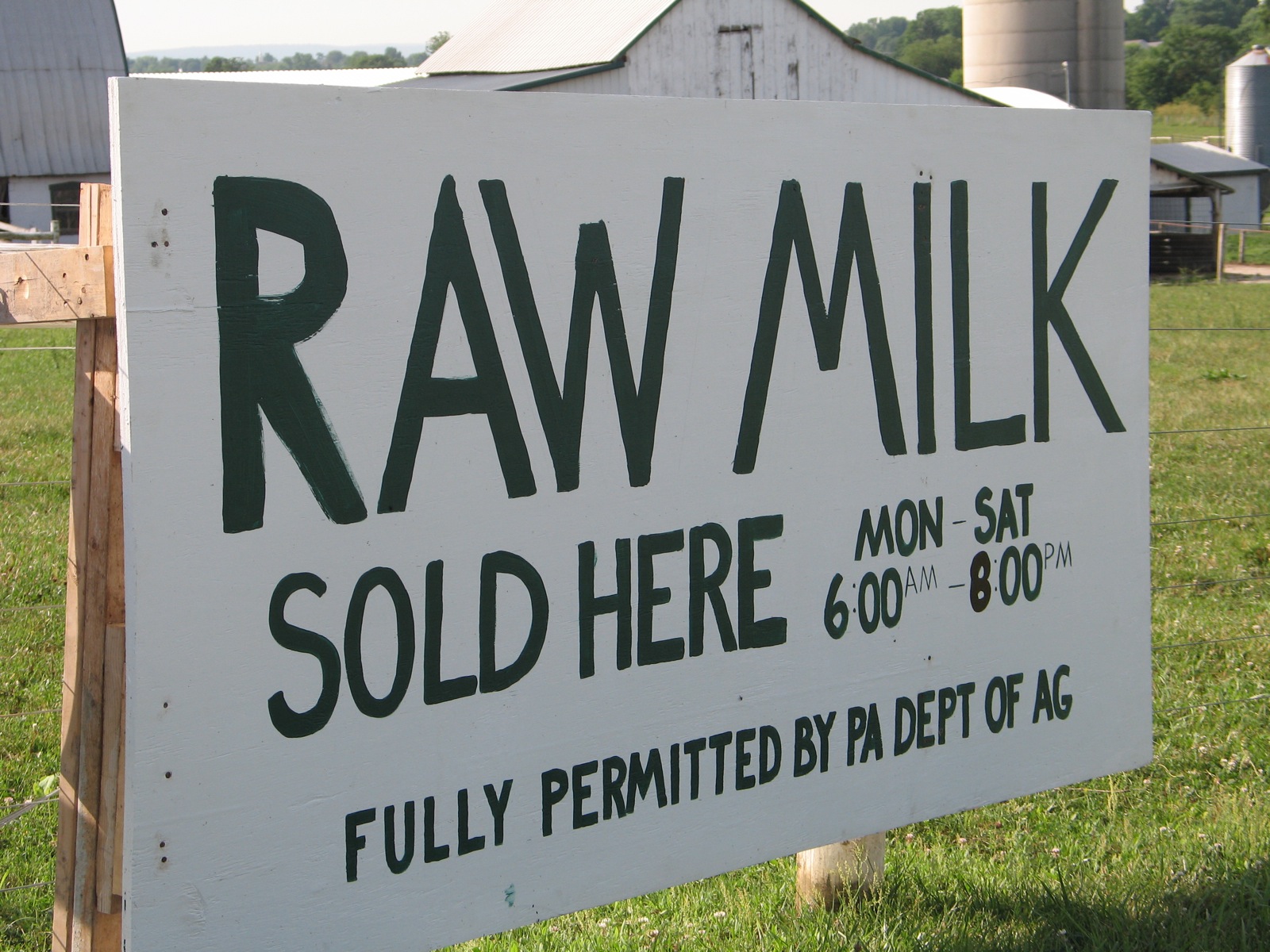
The Raw Milk Movement Calls for Less Food Regulations
It's an ongoing debate whether raw milk is safe for human consumption. Even though federal health officials warn against its consumption, grass roots movements are in full support of raw milk. While only about 1 percent of the U.S. population drinks raw milk, outbreaks have rapidly increased in the past few years giving federal health officials reason to update state health departments about the risks, but not without raw milk advocates contending such warnings.
September 11, 2014 | Source: Nation of Change | by Ashley Curtin
For related articles and more information, please visit OCA's All About Organics page and our Healthy Raw Milk page.
It's an ongoing debate whether raw milk is safe for human consumption. Even though federal health officials warn against its consumption, grass roots movements are in full support of raw milk. While only about 1 percent of the U.S. population drinks raw milk, outbreaks have rapidly increased in the past few years giving federal health officials reason to update state health departments about the risks, but not without raw milk advocates contending such warnings.
Raw milk, which is also referred to as "real milk," is milk that comes from pastured cows, contains all its original fat, is unprocessed and unhomogenized, according to the website Real Milk, a campaign for real milk under the Weston A. Price Foundation. When consumed, raw milk is believed to have many health benefits such as battling against autism as well as many different allergies.
But the Center for Disease Control and Prevention revealed in a 2012 report that "unpasteurized products are 150 times more likely to cause food-borne illnesses than pasteurized versions," according to USA Today. Pasteurization is the process of destroying certain disease-carrying germs and preventing the souring of milk. The process heats the milk at 145 to 150 degrees Fahrenheit for 30 minutes before reducing the temperature to 55 degrees Fahrenheit, according to the website Real Milk. Pasteurization stops milk from souring by killing lactic acid bacilli-disallowing undesirable germs to multiply.
In 1987, a federal law was passed, which banned unpasteurized products from being sold or traded between states, according to USA Today. But today, more than 30 states allow the sale of raw milk for human consumption and Rep. Thomas Massie, R-Ky., introduced two bills that would end the "interstate ban on raw milk sales" and allow the transportation of raw milk between states where its consumption was legal.
Not only are members of Congress trying to ease current raw milk restrictions; advocates are fighting to legalize the sale of "unpasteurized milk" throughout the U.S.
According to USA Today, theories based on the findings of Weston A. Price, a dentist from the twentieth century in which the Weston A. Price Foundation was founded and named, revealed, "pasteurizing milk destroys vitamins and damages health-giving enzymes in milk."
The raw milk debate stems from the claim that tuberculosis in children is caused by harmful germs found in raw milk. But according to Real Milk, studies and experiments conducted by scientists found raw milk to be clean of such disease-carrying germs. While the opposition backs government-supervised Certified Grade A Milk as a viable solution, Real Milk explains that pasteurization of milk destroys part of the vitamin C and "makes insoluble part of the calcium contained in raw milk," which causes serious health risks.
Yet between 2007 and 2012, the Center for Disease Control said it traced 81 food-borne illnesses resulting from the consumption of raw milk. It determined that nearly 1,000 people were sick from its consumption and more than 70 were hospitalized. These patients became sick from campylobacter, a bacteria that has varying gastrointestinal symptoms. But raw milk is also said to consist of other food-borne pathogens such as E. coli and salmonella, which makes millions of people sick yearly.
The cause of such food-borne illnesses can be traced back to sick pastured cows or the mishandling of raw milk. Therefore, Real Milk provides a presentation on the "safety, health benefits and economic benefits of real milk," because their campaign believes that too much blame from the federal government and health officials is concentrated on the consumption of raw milk without the appropriate research it deserves.
As the grass roots movement in support of raw milk continues to grow, actual raw milk drinkers are proportionally small. But advocates want consumers to have the choice and their fight will continue until they victoriously "liberalize raw milk laws in individual states."
